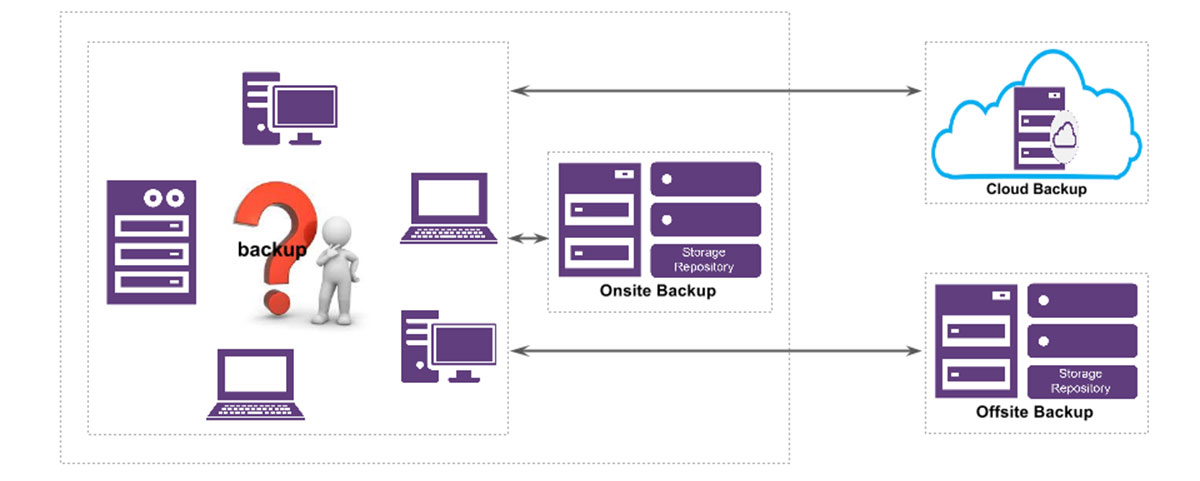
With over 80 percent of all IT budgets committed to cloud solutions, according to the last Intel Security survey, it might almost seem that there’s no room left for on-site digital asset management solutions in enterprise DAM anymore. In reality, on-site digital asset management and cloud-based digital asset management target completely different use cases as will become apparent when we describe some of the most important benefits and disadvantages of the two models.
Benefits of Cloud DAM
Lower upfront cost: Because cloud digital asset management solutions don’t require a costly on-premise infrastructure, they are typically much less expensive to implement. They are also sometimes less expensive to maintain because the responsibility for their maintenance falls on the shoulders of the cloud-based digital asset management system provider, instead of in-house IT staff.

Mobile-ready: With more employers than ever promoting the Bring Your Own Device (BYOD) policy and encouraging employees to work from any device, from anywhere, being mobile-ready is another major benefit of cloud-based digital asset management systems. While on-site digital asset management systems can, and often do, support remote access, their responsiveness depends on the quality of the company’s Internet access.
Pay-as-you-go: Especially startups and companies with a limited budget appreciate the pay-as-you-go billing model that has become synonymous with cloud-based digital asset management systems. With this model, the customer only pays for resources consumed, allowing for effective scalability in the coming years.
Security: Although not many companies want to admit it, only those with the most resources and expertise can sufficiently protect themselves against modern cyber threats. Everyone else is better off focusing on their core business and delegating the responsibility for their cybersecurity to someone else. Cloud-based digital asset management solution vendors apply multiple layers of security to protect their customers, although not all vendors can be equally trusted.
Disadvantages of Cloud DAM
Vendor lock-in: Many vendors of cloud-based digital asset management solutions use proprietary technologies, making it nearly impossible for customers to migrate elsewhere. A dishonest vendor can even take advantage of the fact that the customers have become locked in and increase the prices more than the vendor could afford to otherwise without risking a massive customer exodus.
Network performance: The performance of cloud-based digital asset management solutions depends largely on the speed of the Internet connection between the vendor and the customer. While most companies and even individuals these days have sufficient bandwidth for cloud-based management of documents, problems can occur in situations with long-form content, such as video.
Shadow IT: The term shadow IT describes information-technology systems and solutions built and used inside organizations without explicit organizational approval. While shadow IT isn’t strictly limited to cloud-based digital asset management, it’s the uncontrolled reliance on multiple separate cloud services that can lead to security nightmares.
Limited customization: Most cloud-based digital asset management solutions are multi-tenant and have some shared dependencies which prevent them from being individually customizable to such a high degree as on-site digital asset management solutions. While most small and mid-sized companies are usually satisfied with cloud-based digital asset management solutions as they are, enterprise customers often require a degree of customization that just doesn’t exist in the cloud.

Benefits of On-Site DAM
Total control: The most significant benefit of on-site digital asset management solutions is the level of control they offer. A company that invests into the development of a custom DAM solution can configure it to exactly fit its needs and integrate it with its existing information technology infrastructure.
Maximum local performance: Because the performance of on-site digital asset management solutions doesn’t depend on Internet connectivity, at least not nearly as much as cloud-based DAM solutions do, on-site digital asset management is preferred for bandwidth-demanding use cases, such as video editing.
Regulatory compliance: In many cases, cloud-based digital asset management solutions are out of the question due to the need to comply with relevant laws, policies, and regulations, which often specify how digital assets are to be stored and managed.
Leveraging existing infrastructure: On-site digital asset management solutions allow large companies to leverage their existing information technology infrastructure for maximum control at a relatively affordable price.
Disadvantages of On-Site DAM
High upfront cost: Unless a suitable infrastructure is already present, on-site digital asset management comes with a very high upfront cost as well as a high cost of ongoing maintenance. For smaller companies, on-site digital asset management solutions are often prohibitively expensive, making them suitable only for large companies that can leverage existing resources.
Long deployment time: Even with the financial resources of a large company, on-site digital asset management systems often take long to deploy and even longer to polish for use in a production environment.
Application stack management: A company that decides to implement an on-site digital asset management system gets a large degree of control over the system, which can be seen as an advantage, but the company also becomes responsible for ensuring that the system is ready to meet the needs of the modern, mobile workforce, which can quickly become both massively expensive and demanding.
Limited scalability and security: For an on-site digital asset management system to scale, the underlying infrastructure must also grow, and more IT professionals are required for its maintenance. In most cases, the resources required for the effective scaling of an on-site digital asset management system can be much better used elsewhere.

When selecting a digital asset management solution, the question of cloud versus on-site comes up early. Both models have distinct advantages and disadvantages, and each is suited for a particular kind of business or organization. The on-site model offers the highest possible degree of control and tight integration with existing systems. It also requires sufficient IT staff and enough resources to handle the higher upfront cost as well as the high cost of ongoing maintenance. The cloud-based model exchanges customization in favor of lower IT staff requirements and scaling that doesn’t depend on in-house infrastructure, making it ideal for smaller businesses and organizations.
